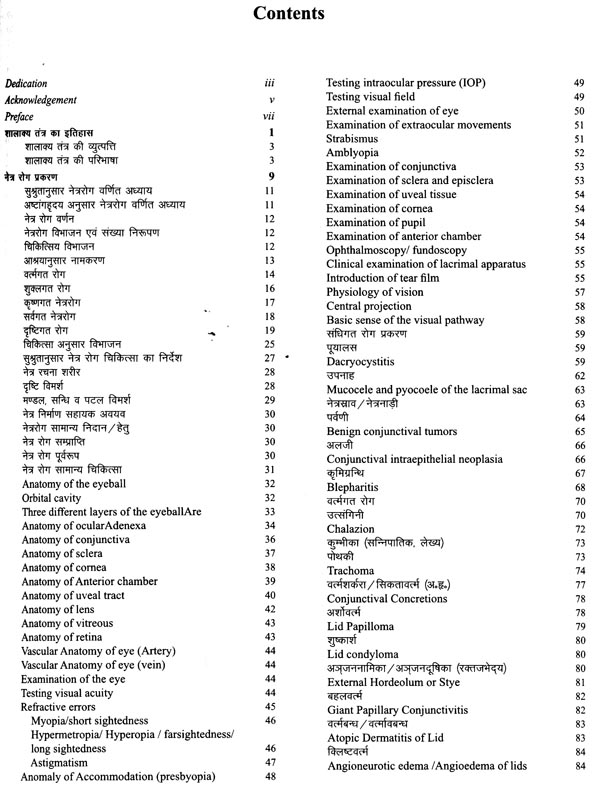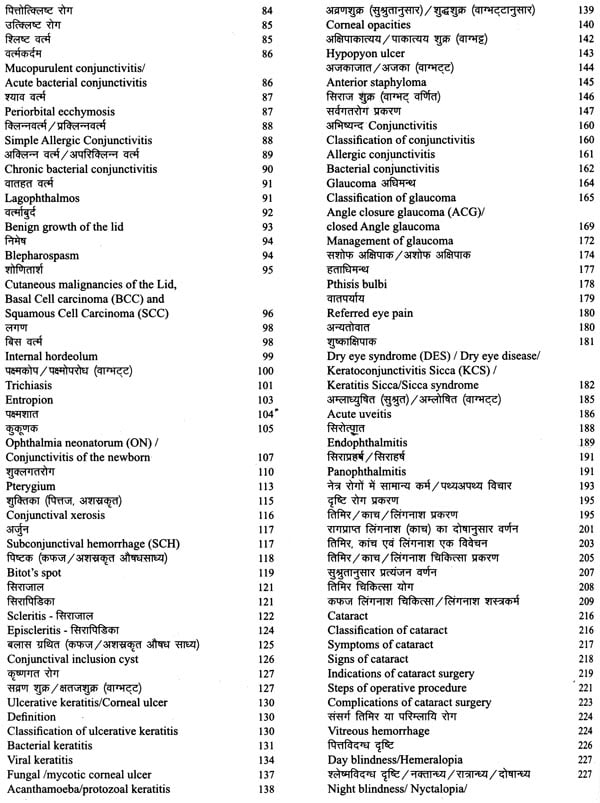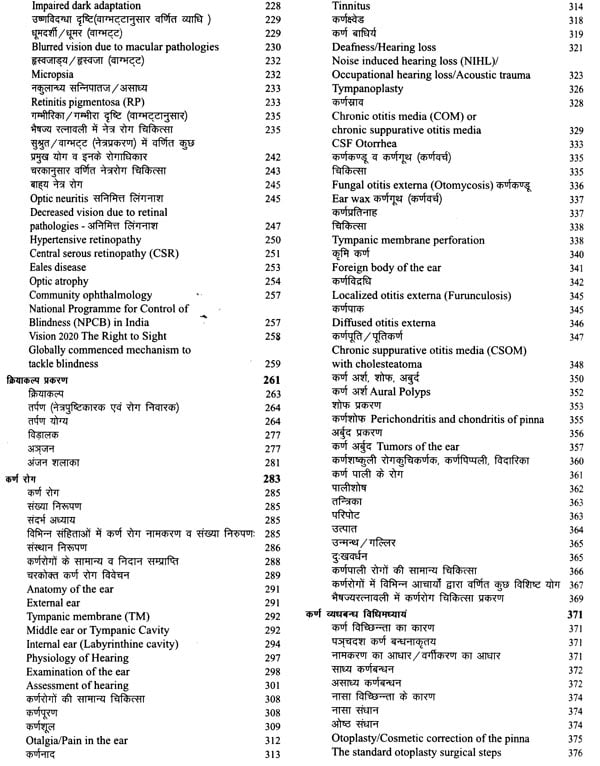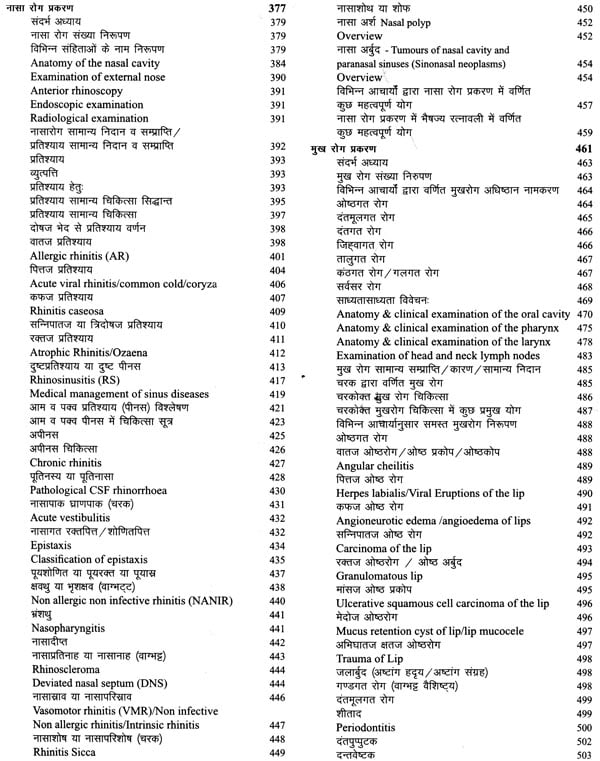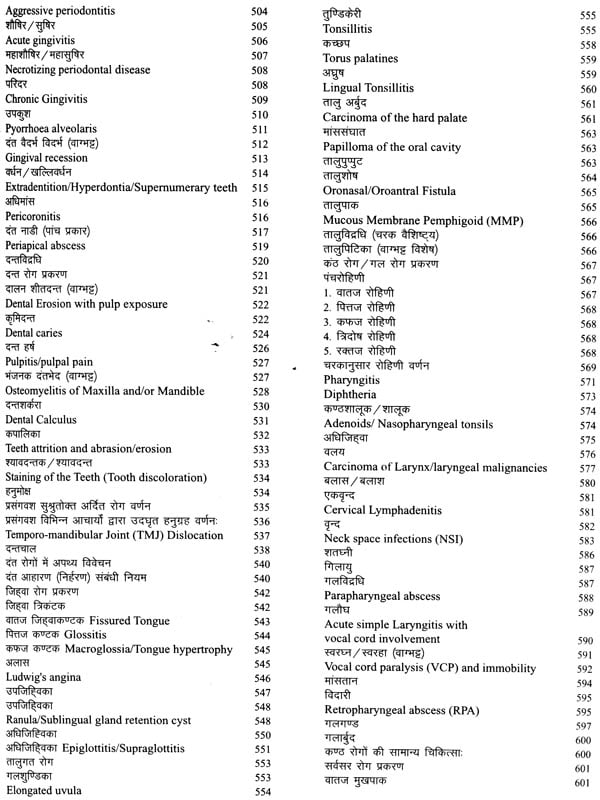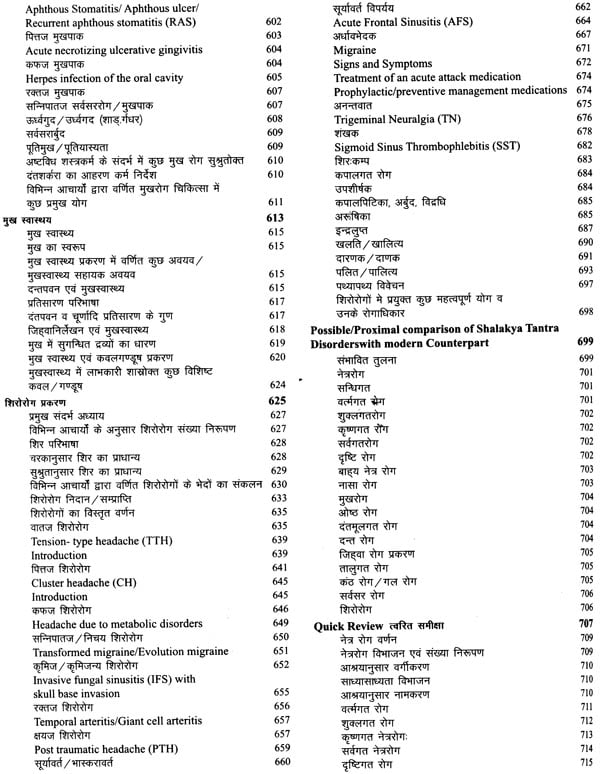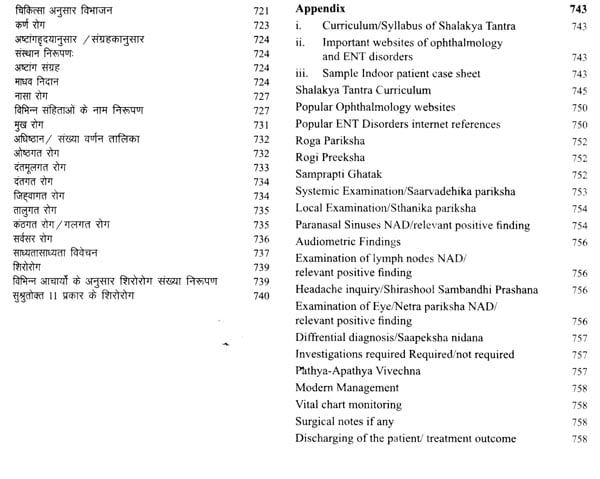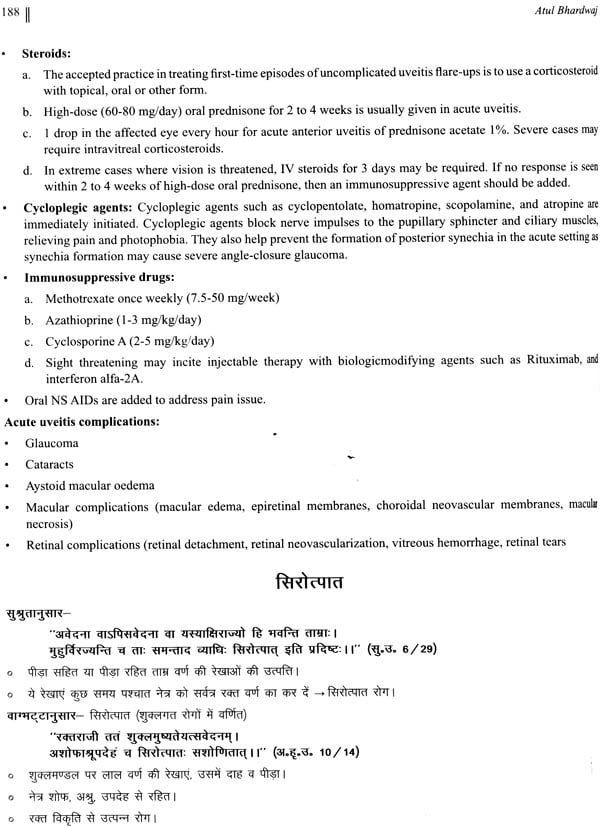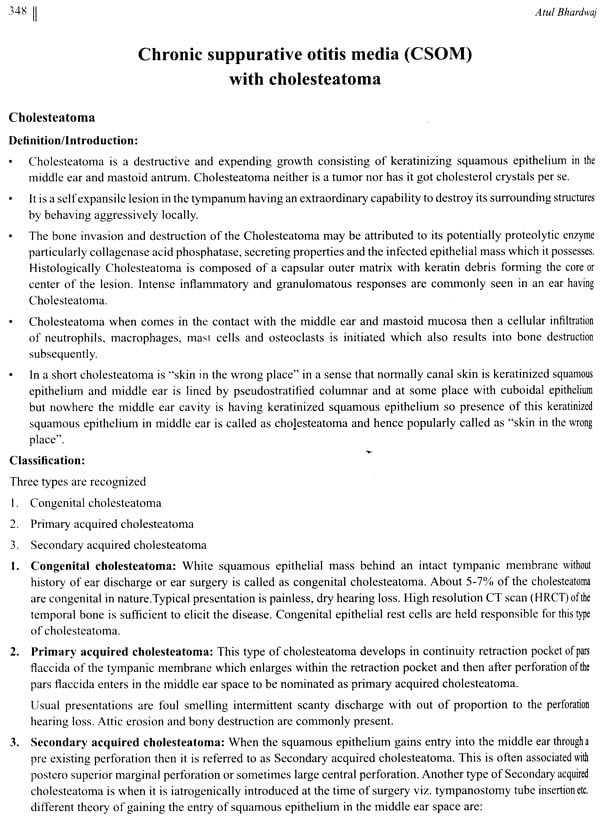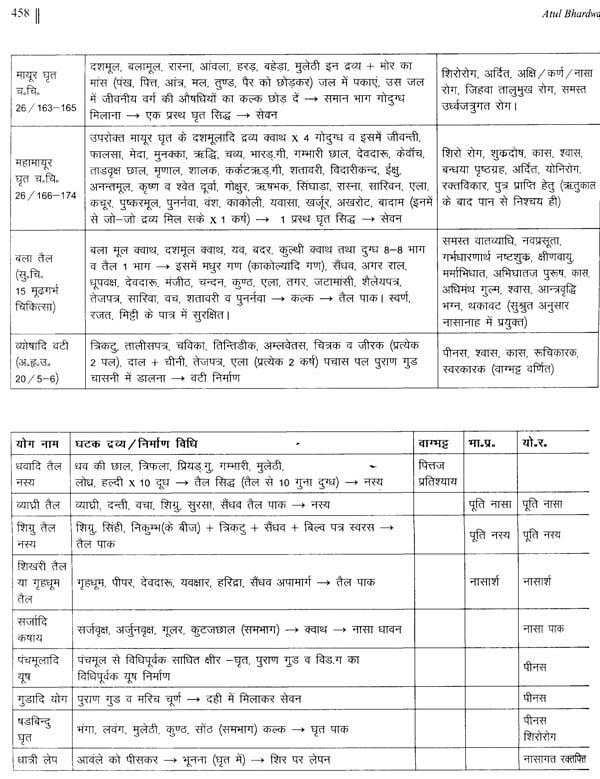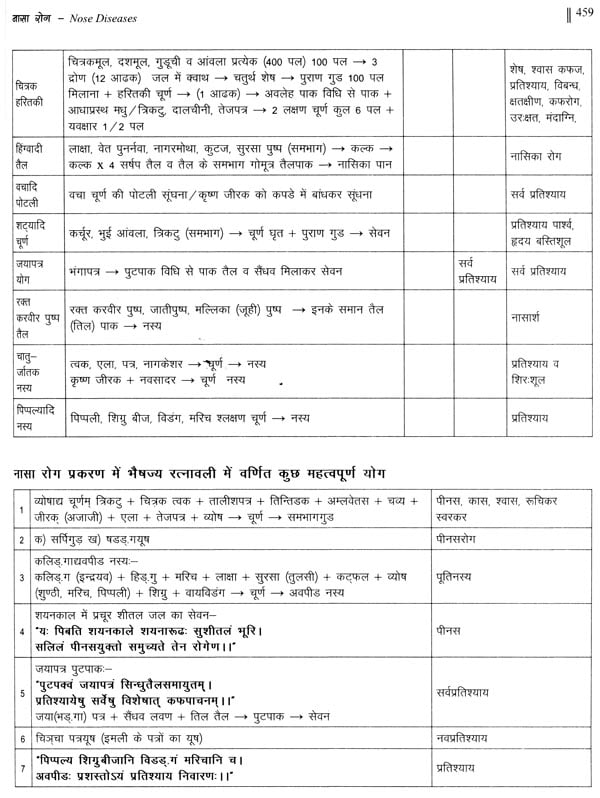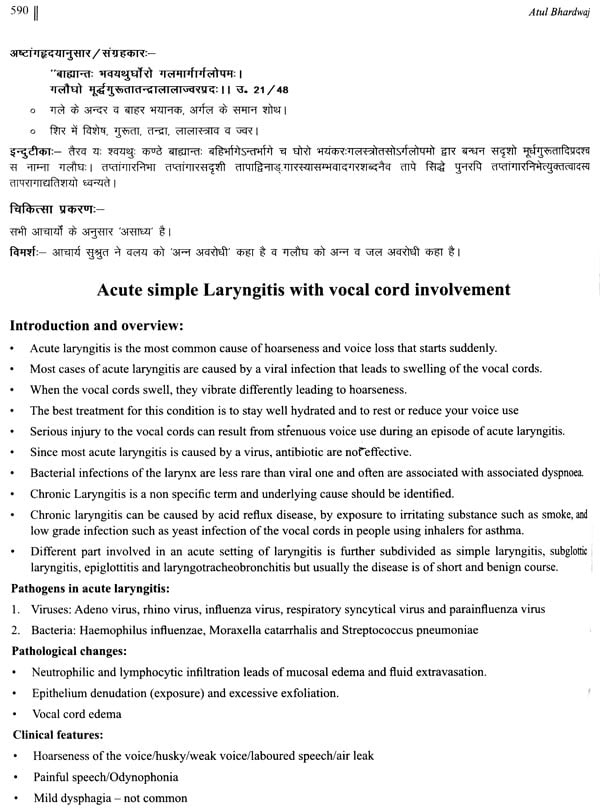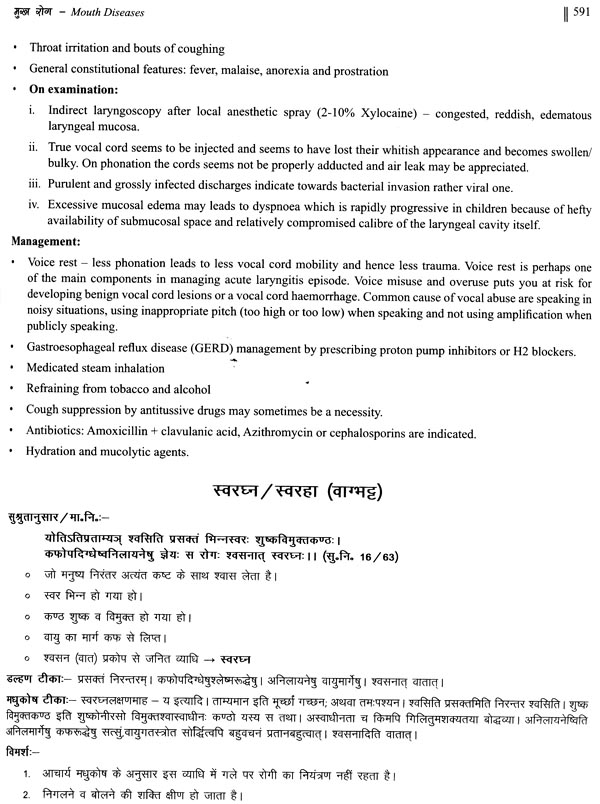
सम्पूर्ण संकलित शालाक्यतंत्र विज्ञान: Comprehensive Compendium of Supraclavicular Disorders in Ayurveda
Book Specification
| Item Code: | NAP813 |
| Author: | Dr. Atul Bhardwaj |
| Publisher: | Dr. Atul Bhardwaj |
| Language: | English and Hindi |
| Edition: | 2021 |
| ISBN: | 9789389665390 |
| Pages: | 593 |
| Cover: | PAPERBACK |
| Other Details | 11.00 X 8.50 inch |
| Weight | 1.70 kg |
Book Description
Dr. Atul Bhardwaj has completed BAMS in 2001 from Delhi University, MS (Shalakya Tantra) from Rajiv Gandhi Post Graduate Institute, Paprola (HP) in 2005 and Ph.D from National Institute of Ayurveda (NIA), Jaipur, Jodhpur Ayurved University, Rajasthan in 2011. He has been a part of more than 45 National and International Conferences and presented multiple papers on national platforms. He also possesses BEC ( Business English Certificate - level I and level II ) both from Cambridge University, United Kingdom. Dr. Bhardwaj is currently working as Assistant Professor in Dept. of Shalakya Tantra in Ch. Brahm Prakash Ayurved Charak Sansthan, Khera Dabar, Delhi.
To Dr. Atul Bhardwaj's credit are 5 international original research papers and multiple national publications. He has been awarded with the best paper presentation in a UGC orientation programme of 4 weeks. He has been actively engaged in teaching and training of Shalakya Tantra particularly ENT disorders for more than 9 years. He is constantly abreast with the surgical procedures/modern diagnostic procedures/ radiology done and other interventions in the field of ENT including modern tools of teaching with subtle knowledge of gadgets for the enhancement of quality of education at undergraduate level.
His special interest is in exploring sharing area between Ayurveda and modern counterpart in the field of Ear, Nose and Throat disorders particularly establishing classical treatment of various ENT disorders with modern parameters. Some of his more significant work includes: Application of Anuloma Viloma Pranayama in Naso Muco Ciliary Action and validating the result with a gold standard estimation procedure viz. Anderson's Saccharine Test.
Effect of modified breathing techniques on sinus ventilation using Bernoulli phenomenon application and CT scan study support.
Elaborating how different types of morphological forms of nasal drug delivery system behaves in the nasal cavity ambiance with special mention to Nasal Muco Ciliary Clearance.
Mode of action of Berberis Aristata in pharyngitis and super antigen modification in context of disease reversal.
Intratympanic usage of medicated oil elaborated in Ayurvedic classics in degenerative hearing loss.
To be honest, the instinct of writing a curriculum book was an outcome of a frustration rather than anything else which surfaced in my mind as a result of observation pertaining to dearth of a comprehensive book of Shalakya Tantra catering and conglomerating all the segregated literary documentation of my subject or we have to forcefully choose a curriculum book from a very limited pool. Apart from this fact , the difficulty and intricacy of writing modem litrature in hindi/Sanskrit in order to describe a modem diseases is a common err which is almost irritating at times as even the students want to study modem disease in the way it should be viz. like it is done in modem medical books, hence a Sanskritifaction of the modem disease is neither a help nor required. So I decided not to follow the trend of liability to nominate all the otorhinolaryngology and ophthalmic disorders with hindi/Sanskrit nomenclature which is not standardised as well as subjective, hence ambiguous for the students. I also want the students to believe that only proximal nomenclature of modem counterpart can be suggested for every classical disorder and the funny explanation come to my mind is that Aacharya Sushruta and Vagbhatta has not went through the modem literature before documenting the Ayurvedic disorders in our supreme texts. But at the same time how can I be faulty by not following the essence of my training and wisdom words of my teachers that innate sense and soul of any literature must be respected at any cost.
People also recently have opined that deviation from classical texts of Ayurveda is essential in order to be progressive and they should be timely replaced by newlg ritten literature. I have got no problem with this concept but the only reservation I have to make is that if this Endeavour turn out to be translation and transliteration of the modem texts, which I fear will be the case, than this addendum will turn out to be a aesthetic face lift rather actually enriching the Ayurvedic point of view.
When we go through the classical literature of diseases in Ayurveda and their related management one thing that stand out is, the acceptability of various possible treatment of a malady and a sense of respect, as any treatment modality inherently has got one thing common and that for me is to mitigate the patient grievance. Hence excelling of any medical science does not offer a threat for the other and they only possible way to make the full use of their potential is to accept them as friend and complementary rather than foe. The growth and mass acceptability of one don't offer any kind of threat for the counterpart and this certainly held true for Ayurveda and modem medical science too. Any science has to move on and for me, the best possible definition of science will be that progressiveness has to be its indispensable trait as has Ayurveda and modem science. For example if we have a pediatric patient having acute episode of middle ear infection and this is just another extrapolation of his recurrent upper respiratory tract problem, so aptly and fitting in the condition will be to manage the impending tympanic membrane perforation with modem medicine and subsequently managing the same patient for his chronic respiratory infection with Ayurvedic medicines as frequent antibiotic consumption has got its own unfavorable outcomes, we all are aware of. So, if you got to ask which management was found to be superior in the upstated scenario the question will be substantially irrelevant and dishonest but the hardcore will offer a never exhausting list of pros and cons in the said context.
There is no denial of the fact that analgesics, antibiotic and emergency management has made modem medicine as a obvious choice in many of the emergent conditions but that simply does not mean that it has curb the ground that has be made by other treatment modalities in centuries. Every person has got his wisdom to choose what he has been offered and the same is true for his choosing a treatment option available also. Gone are the days when treating a patient was considered to be a war of pathies and fight for the territory to many of the so called developed minds, take this fight to the counter territory by throwing the question of existence and non existence with my way or highway kind of approach with a clear imposed message that only possibility of one existence is with extinction of the other.
Being in the teaching profession of Shalakya Tantra for more than years I have been fortunate enough to closely overview of the thought process of the students regarding approach in acquaintance of the skills of Ayurveda as well as modem medical science, surprising enough most of the students has got no issue with this hypothetical projection that acquiring skills of the modem science will cripple their skill in their prime objective viz. skills of Ayurveda skills/ knowledge and they want to have a comprehensive knowledge of the patient and disease management skill rather than following a compelled view than Ayurveda can only excel when modem medical science skill acquaintance will be shun and hence a sense of only one has to be chosen is simply not accepted. Many a times they are curious enough to learn about a modern diagnostic technique viz. CT scan, USG and MRI etc at the same time they do not percept this as contrary to the skill procured as an Ayurvedic doctor. Apart from this fact any science has to be progressive to steady its sheen among the budding and future doctors of Indian system of medicine and the monotonous and stereotyped thought has to be thrown out of the window to channelize the positive energy in the students forthcoming. Hence the arbitrary and insecure idea that the mere existence of Ayurveda can only be possible when these two leading treatment modalities must behave like shores of a river is not going to help in any way and students must be convinced that they has got a common motive after all.
Another honest confession I want to pen down is that this book doesn't intends to replace the need of a modem ENT or ophthalmology textbook need for Ayurvedic students as they are the best possible source of modem diseases details as well as anatomy, surely better than my book will be and the availability of modem medical literature is vast with internet taking the centre stage almost anywhere and everywhere. Even a long journey surely starts with short strides and for me this maiden publication stride is going to help the students upcoming. I am once again not darning to be this book as the best book of Shalakya Tantra available and a superhuman effort but an honest attempt has been made. Now it is upto the audience/readers to decide whether this attempt has paid off. Mistakes of all kind especially typographic errors are a tenacious part of any initial publication, I politely apologize and I will be last person in refuting any kind of suggestion/recommendation to be made prospectively.
**Contents and Sample Pages**
